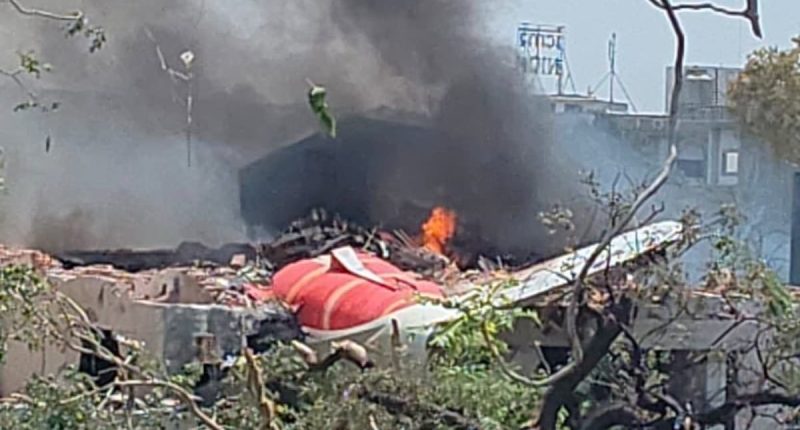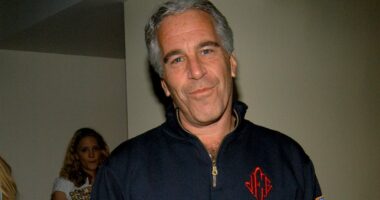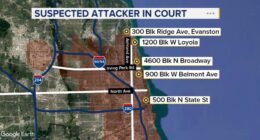Share this @internewscast.com
Another day – another plane crash.
An Air India plane, on its way to London Gatwick, crashed soon after departing from Gujarat in northwestern India, with 242 individuals on board, including both passengers and crew members.
This tragedy echoes the devastating crash earlier this year involving an American Airlines regional plane and a military helicopter in Washington DC, which resulted in the loss of 67 lives, as well as a series of other unfortunate incidents since the start of 2025.
And the most terrifying thing about this tragedy and these close calls is that we in the aviation industry saw them coming.
As someone who has previously served as a commercial pilot, crash investigator, and authority on accident causation, I have observed how the safety measures that took years to establish have been gradually diminished in recent times.
It started with declining standards at Boeing – turning out planes with defects, such as the Boeing 737 Max, that led to the deaths of 346 people in two crashes in less than six months in October 2018 and March 2019.
Last January, a door-sized panel blew out in a 737 Max mid-flight with near-catastrophic consequences.
But the truth is the experts have been raising the alarm for years.

Chunks of the plane’s fuselage and tail were seen protruding from a demolished building

The plane momentarily disappeared from view behind trees and buildings before a massive fireball erupted on the horizon in this horrifying clip
We have watched in horror as planes come within a few hundred feet of each other – on the runway or in the air.
If planes come within a couple of miles of each other, we start to worry. Any distance noted in feet counts as within a hair’s breadth of disaster!
I had a near miss experience myself when flying as a pilot for Delta Connection.
I had just landed at JFK and a 747 was coming into land on a parallel runway. The control tower asked the pilot if he would be able to stop short of our location and he said that he could which meant they cleared us to cross the runway.
We had a gut feeling that this pilot – who possibly wasn’t familiar with the airport – couldn’t do what he said and so we decided not to cross and to stay where we were.
A few moments later the 747 blasted through right in front of us, hurtling past at a high rate of speed. If we’d crossed the runway as directed, there would have been a collision.
So, I’m sorry to say that when news broke on January 29 that a commercial airliner had been struck by a Black Hawk helicopter in the skies above DC’s Reagan International Airport, I wasn’t surprised.
I have long feared that it wasn’t a matter of ‘if’ such a catastrophe would happen but ‘where’ and ‘when.’

A Southwest plane and a private jet narrowly avoided colliding at Chicago’s Midway Airport in February. It’s a sickening reminder of the American Eagle crash with a military helicopter in DC that killed 67 (pictured)

Last January, a door-sized panel blew out in a 737 Max mid-flight with near-catastrophic consequences (pictured)
A key contributing factor to the problems we are experiencing in our airspace system is the chronic shortage of air traffic controllers.
I feel for these controllers. They are over-worked and over-stressed – they know that if they make a mistake someone could die.
That’s not to say that planes are falling out of the skies. Air travel is still the safest mode of transport we have.
But, unfortunately, several dramatic incidents in the last year have rattled public confidence in safety.
Within 48 hours of the DC crash, a small medical jet crashed into a Philadelphia neighborhood killing all six on board and claiming the life of another on the ground – another awful and dramatic moment.
On February 6, a small, chartered aircraft carrying 10 crashed in Alaska.
Nine days later, a Delta Connection flight from Minneapolis with 76 passengers and 4 crew collapsed as it struck the runway, flipped and caught fire, losing its tail and a wing. Mercifully, everyone survived.

‘I feel for these controllers. They are over-worked and over-stressed – they know that if they make a mistake someone could die.’ (Pictured: Shawn Pruchnicki testifies during a Senate Homeland Security and Governmental Affairs)

On February 19, a Delta Connection flight from Minneapolis with 76 passengers and 4 crew lost its landing gear as it struck the runway, caught fire and flipped, losing its tail and wings. Mercifully, everyone survived
I don’t think that either the Philadelphia or the Alaska crashes would have made national and international news headlines had they not happened in such close proximity to the two crashes involving commercial flights.
But its undeniable that the buffer of safety in which we once felt so secure has been eroded.
Another valid concern is that regional and national airlines are hiring pilots and promoting them through the ranks with less experience than ever before.
I’m not aware of any studies that focus on the impact of limited experience on flight safety, but the truth is that, without positive measures to address the problems in our skies, accidents will keep happening and more frequently.
We need more qualified candidates in the pipeline for air traffic controllers.
When the National Transportation Safety Board (NTSB) recommends changes in the wake of their incident investigations they must be implemented.
If the Federal Aviation Administration (FAA) needs more funding to make this happen then they must be given it.
We need to continue to develop and invest in technology that will help pilots and air traffic controllers do their jobs – not to replace them but to assist them.
Make no mistake there is still a pretty good safety buffer in place in our skies but it’s shrinking, and we need to act now if we want to stop it from shrinking further.
Shawn Pruchnicki is an Assistant Professor at The Ohio State University in the College of Engineering. He was a Delta connection pilot for 10 years and trained in accident investigation at the NTSB Academy. He has testified to the US Senate on the current Boeing safety culture and manufacturing problems and his research into aviation safety has been published including by NASA and the FAA.

















